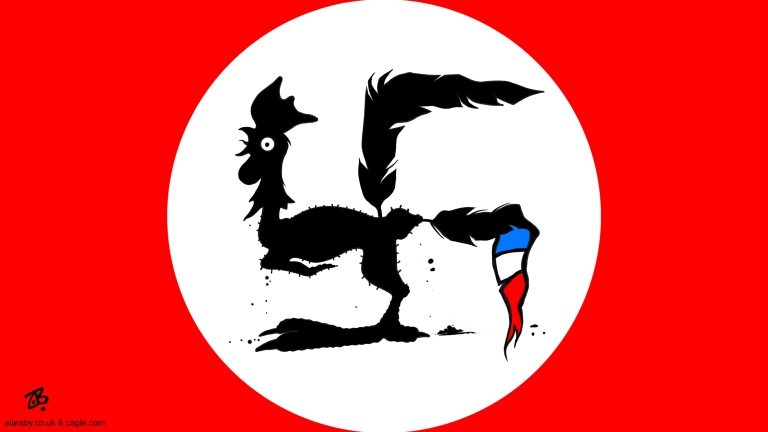
Rainbow Murray, Queen Mary University of London
French voters went to the polls on Sunday for the first round of snap legislative elections. For the first time, a victory for the far right is looking like a credible prospect – an extraordinary turnaround for a party that until 2022 held only a handful of seats in parliament.
The far-right National Rally has topped the polls with a score of more than 33% of the first-round vote (compared with 18.7% in 2022). The left-wing New Popular Front alliance is a few points behind in second place with 28% of the vote. And Emmanuel Macron’s centrist Ensemble alliance is languishing in third place after scoring a disappointing 21%.
This result puts the National Rally on course to become the biggest group in the 577-seat National Assembly. But there is still a high degree of uncertainty regarding whether the far right can win enough seats to obtain a working majority, and even greater uncertainty about what will happen if it does not.
The two-round electoral system means that some seats produce complex three-way competition (triangulaires) in the second round. With turnout being at its highest in decades, more than half of all seats saw three candidates qualify for the second round, which takes place on July 7. A handful of seats have even produced a four-way competition.
Parties are now making tactical decisions about how to approach triangulaires. All parties of the left have indicated that they will stand down a third-placed candidate to avoid splitting the vote, and will instead support anyone standing against the far right.
Centrist parties, on the other hand, have agreed to support all candidates sharing “republican” values while disavowing those on the far left and far right. These decisions could lead to fewer seats for the far right than currently predicted.
Adding to the uncertainty is that voters will now also need to make tactical decisions for the second round. Voters whose preferred candidate has been eliminated need to decide whether to support a different candidate or abstain.
Some parties have called on their voters to block the far right. But the mainstream right party, the Republicans, which received 6.6% of the vote, has refused to give any signal to its electorate.
The picture is particularly muddled this time. The unexpected calling of a snap election, combined with a short campaigning window (only 20 days), has given parties a very narrow time frame within which to broker deals with other parties and prepare campaigns and manifestos.
Parties on the left formed a surprising, rapid and rather fragile alliance. The Republicans split into two, with the party’s leader, Eric Ciotti, and his colleagues teaming up with the far right.
Macron’s centrist block is also looking increasingly divided, with some openly questioning Macron’s wisdom in calling the election in the first place. All of this sudden movement, within a party system built on shifting sands, has left voters bemused and scratching their heads.
Another round – and then what?
The nail biting doesn’t end when the second-round results are in. That only concludes the opening act, and many of the biggest plot lines will still be to come.
If the far right do indeed obtain a majority, they will have an unprecedented opportunity to act. They will, however, be restricted by constraints imposed by the constitution, the EU and the need to work with Macron, who will continue as president until 2027 and will be a continuous thorn in their side.
Macron will still lead on foreign policy and will have a platform from which to criticise the government, but the government would lead on most domestic policy.
A far-right government would probably also have to contend with widespread protests that may erupt into violence. Just last summer, widespread riots broke out triggered by police brutality and racial profiling.
The leader of the far right, Jordan Bardella, has indicated that he does not want to form a minority government that will be at the continual mercy of no-confidence votes.
The remaining parties are also too small to govern alone and appear too divided to work together. The New Popular Front includes the far-left France Unbowed party that loathes, and is loathed by, the centrist and right-wing parties.
A hung parliament with a minority government that cannot find enough allies to get anything done will produce a stalemate. This was the position faced by the outgoing government. And the untenable nature of this scenario is why the election was called in the first place.
The key question now is whether the credible threat of a far-right government will finally focus the minds of other politicians and prompt them to work together in the way that Macron had hoped. To do so, they will need to put aside their differences and paper over the deep divisions within French politics and society.
Whether the far right sweep into power or an unstable minority government ensues, French politics may well remain volatile until the next presidential election in 2027. Macron took a big gamble in calling this election and there are no guarantees his risky punt will pay off.![]()
Rainbow Murray, Professor of Politics, Queen Mary University of London
This article is republished from The Conversation under a Creative Commons license. Read the original article.
















